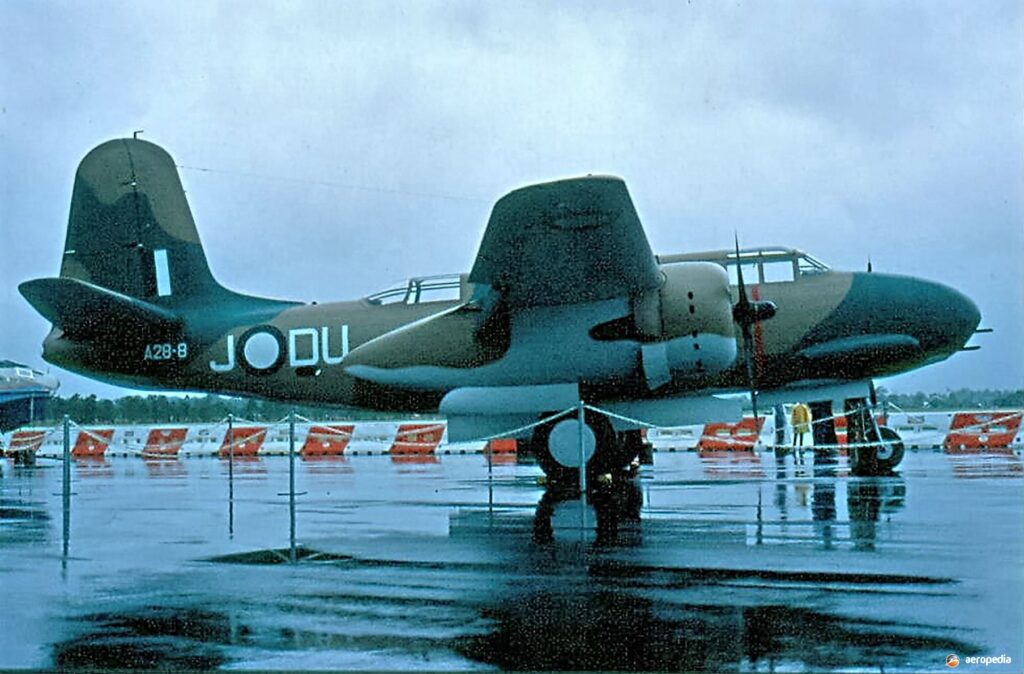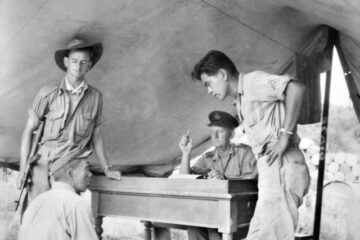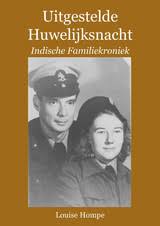The Dutch government of the Netherlands East Indies (NEI) ordered several Douglas A-20 Havoc (DB-7) aircraft from the United States just before the start of WWII in the Pacific, intending to strengthen their defenses. These aircraft, used as light bombers and attack planes, were adopted by various Allied forces during the war. In British service, they were known as “Boston” bombers, and night fighter versions received the name “Havoc.”

In total, 28 DB-7B Bostons were shipped from the United States for delivery to the NEI. Because of the rapid Japanese advance, only six reached Java at the end of February 1942, where they were partly assembled. Two of these aircraft were later captured and flown to Japan for testing. The remaining 22 aircraft were diverted to Australia, assembled there, and taken into service with the RAAF.
After being assembled, 10 DB-7s were issued on paper to No. 18 (NEI) Squadron of the Royal Australian Air Force (RAAF), which included both Dutch and Australian personnel. Technically, these planes were still owned by the NEI government, but operational difficulties soon arose. The DB-7s had limited range, which made them unsuitable for long-distance missions over the NEI from Australia. Additionally, No. 18 Squadron lacked pilots trained to operate the DB-7/A-20, further complicating their deployment.
At the same time, the U.S. Army Air Forces (USAAF) 3rd Bombardment Group in Melbourne was assembling eight A-20As. These aircraft were exchanged with No. 18 Squadron for B-25 Mitchell bombers, which the Dutch preferred due to their longer range. The B-25s were seen as more practical for the kind of missions required over the NEI.
As a result of these factors, the Dutch relinquished ownership of the DB-7s, canceling their transfer to No. 18 Squadron. These aircraft were instead reassigned to No. 22 Squadron of the RAAF, which was already operating Boston bombers. The eight A-20As that had been temporarily allocated to No. 18 Squadron were handed over to the USAAF’s 89th Bombardment Squadron.
Ultimately, the Dutch opted for the more versatile B-25 Mitchell, while the DB-7/A-20 aircraft found new roles within the RAAF and USAAF. The challenges surrounding the DB-7s highlighted the operational complexities and shifting priorities during the war..
Below is a link to an edited video recording of the Aviation Historical Society of Australia (Qld) Inc. meeting at Archerfield Airport when AHSA member Mark “Syd” Harbour gave a very detailed presentation titled “DB-7B / A-20 Boston in RAAF Service.
Original documentation regarding the acquisition.
With thanks to Peter Dunn
Abstract from the Dutch article below – author Jan Gerrits: Douglas DB-7B Boston and the Dutch–Australian connection
Just before the outbreak of the Pacific War, the Netherlands East Indies government ordered Douglas DB-7B Boston light bombers from the United States to modernise the Marine Luchtvaartdienst (MLD). Painted initially in RAF colours, these aircraft were redirected as the Japanese advanced, with most never reaching Java. Instead, the majority were assembled in Australia and taken into service by the Royal Australian Air Force.
Although ten Bostons were briefly allocated on paper to No. 18 (NEI) Squadron, they were soon exchanged for the longer-range B-25 Mitchell, which was better suited to operations over the archipelago. The Bostons were then absorbed into RAAF service, where they contributed to the defence of Australia and New Guinea.
This short-lived Dutch link highlights how urgent wartime logistics and shifting priorities shaped the fate of modern aircraft. While intended for Dutch crews, the Bostons ultimately strengthened Australian squadrons, leaving behind a shared Dutch–Australian aviation heritage.


